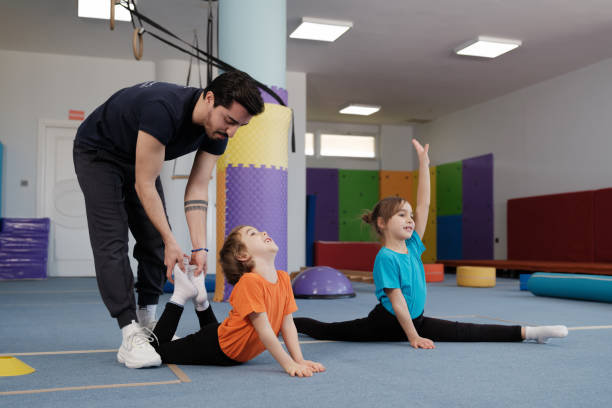Introduction
Starting your fitness journey can be both exciting and overwhelming, especially if you’re a beginner. Having a solid workout plan tailored to beginners is essential for building a foundation and achieving long-term success. In this comprehensive guide, we’ll walk you through everything you need to know about beginner workout plans, from the benefits to the best exercises to get you started.
What Are Beginner Workout Plans?
Beginner workout plans are structured exercise routines designed for those who are new to fitness or are returning after a long break. These plans focus on building strength, improving cardiovascular health, and enhancing flexibility without overwhelming the individual. The goal is to create a sustainable routine that gradually increases in intensity as your fitness level improves.
Why Are Beginner Workout Plans Important?
Starting with a beginner workout plan is crucial because it helps you ease into a fitness routine, reducing the risk of injury. These plans are typically less intense, allowing your body to adapt to the new physical demands. They also help build confidence and consistency, which are key factors in achieving long-term fitness goals.
Components of a Beginner Workout Plan
A well-rounded beginner workout plan should include a mix of cardio, strength training, and flexibility exercises. Here’s a breakdown of each component:
Cardiovascular Exercises
Cardio exercises are essential for improving heart health, burning calories, and increasing endurance. For beginners, low-impact activities like walking, cycling, or swimming are ideal. Start with 20-30 minutes of cardio, 3-4 times a week, and gradually increase the duration as your stamina improves.
Strength Training
Strength training helps build muscle, improve bone density, and boost metabolism. Beginners should focus on bodyweight exercises such as squats, lunges, push-ups, and planks. These exercises target multiple muscle groups and can be done anywhere, making them perfect for those who are new to fitness.
Flexibility and Mobility Exercises
Flexibility and mobility exercises improve range of motion, reduce the risk of injury, and aid in muscle recovery. Incorporating stretching routines or yoga into your beginner workout plan is essential. Spend 5-10 minutes stretching after each workout to enhance flexibility and prevent muscle stiffness.
Sample Beginner Workout Plan
Here’s a simple beginner workout plan that you can follow:
Full-Body Workout
- Warm-up: 5 minutes of light cardio (walking or jogging)
- Bodyweight Squats: 3 sets of 12 reps
- Push-Ups (modified if needed): 3 sets of 10 reps
- Lunges: 3 sets of 10 reps per leg
- Plank: 3 sets of 20 seconds
- Cool Down: 5 minutes of stretching
Cardio and Core
- Warm-up: 5 minutes of brisk walking
- 20 minutes of steady-state cardio (cycling, swimming, or walking)
- Bicycle Crunches: 3 sets of 15 reps per side
- Russian Twists: 3 sets of 12 reps per side
- Cool Down: 5 minutes of stretching
Rest or Active Recovery
- Light stretching or a gentle walk
Upper Body Focus
- Warm-up: 5 minutes of light cardio
- Dumbbell or Resistance Band Rows: 3 sets of 12 reps
- Shoulder Press: 3 sets of 10 reps
- Tricep Dips: 3 sets of 10 reps
- Bicep Curls: 3 sets of 12 reps
- Cool Down: 5 minutes of stretching
Lower Body and Cardio
- Warm-up: 5 minutes of light cardio
- Bodyweight Squats: 3 sets of 15 reps
- Glute Bridges: 3 sets of 12 reps
- Step-Ups: 3 sets of 10 reps per leg
- 15 minutes of steady-state cardio
- Cool Down: 5 minutes of stretching
Flexibility and Core
30 minutes of yoga or Pilates focusing on flexibility and core strength
Rest or Active Recovery
Light stretching or a gentle walk
Tips for Success with Beginner Workout Plans
Start Slow
Don’t rush into intense workouts. Start with exercises that match your current fitness level and gradually increase the intensity.
Stay Consistent
Consistency is key to seeing progress. Stick to your workout plan, and over time, you’ll notice improvements in strength, endurance, and overall fitness.
Listen to Your Body
Pay attention to how your body feels during and after workouts. If something doesn’t feel right, modify the exercise or take a rest day to avoid injury.
Set Realistic Goals
Set achievable goals that align with your fitness level. Whether it’s losing weight, gaining muscle, or improving stamina, having clear goals will keep you motivated.
Seek Guidance
If you’re unsure about how to perform certain exercises, consider seeking guidance from a fitness professional or using reliable online resources to ensure proper form and technique.
FAQs
1. How often should beginners work out?
Beginners should aim for 3-4 days of exercise per week, incorporating a mix of cardio, strength training, and flexibility exercises.
2. What should I eat before and after a workout?
Before a workout, eat a light snack rich in carbohydrates and protein. After a workout, focus on replenishing with a balanced meal that includes protein, healthy fats, and complex carbs.
3. Can I lose weight with a beginner workout plan?
Yes, combined with a healthy diet, a beginner workout plan can help you lose weight by burning calories and building muscle.
4. How long will it take to see results?
Results vary depending on your consistency and diet. Most people start noticing changes in their fitness level within 4-6 weeks.
5. Do I need special equipment for a beginner workout plan?
No, many beginner workout plans use bodyweight exercises that require little to no equipment. As you progress, you can incorporate dumbbells or resistance bands.
